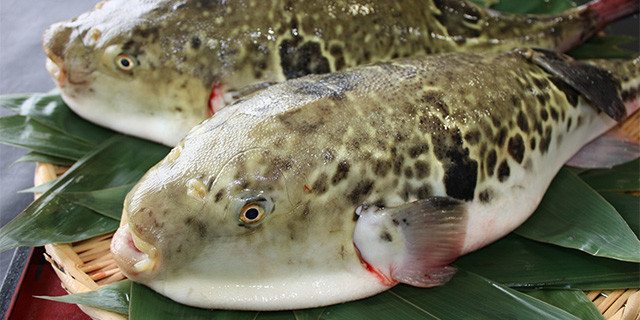
If blowfish weren’t poisonous, they might not be so popular.” The history of blowfish is the history of prohibition by authorities. Kitahara the owner of Blowfish museum in Osaka, noted as follows: “Human beings are funny. But it became popular again around the end of the regime in the mid-19th century as the government lost control over the people. In the medieval era, the Tokugawa shogunate regime strictly banned blowfish consumption. Nonetheless, fugu ovaries, intestines and livers can be so deadly that if even touch of them is left in the fish the client dies and sometimes in five minutes or less. For many the elegant Japanese, a death-defying event is a status symbol. Japanese ritual eating deadly poisonous fish is difficult for foreigners to comprehend.
#FUGU LIVER FULL#
Fugu sashimi is costly and you can budget for “proper fugu”, quality of fresh wild fugu, not farmed will cost approximately JPY 50,000 per person inclusive of drinks and for a full set meal.įugu feed predominately on snails and have been known to snap at swimmers testes, go figure given you can eat teir testes – hmmmn.
#FUGU LIVER LICENSE#
Fugu no Doku is blowfish poison and fugu atari is blowfish poison poisoning and was quite deadly in the Edo period.įugu is generally highly prized and priced in Tokyo due to the need for a license and the exclusive nature. The client who consumed the liver survived. One of the more notable incidents happened when a two michelin starred chef was suspended from a prestigious fugu restaurant in Tokyo, after serving fugu liver to a patron who was demanding it, despite the continuous warnings of its levels of toxins. The poison causes paralysis and people die from asphyxiation.
#FUGU LIVER SKIN#
Now if you would be crazy enough to prepare fugu at home – the fish carries the neurotoxin tetrodotoxin in it’s organs, especially the ovaries and liver and sometimes the skin contains small amounts. In most years, the recorded number is zero. The death toll from eating fugu is also incredibly low in Japan, with the most recorded in any year being six. But the chances of that happening are very remote, possibly as remote as being hit by lightening crossing the street or less. In fact it isn’t dangerous but if it is served by a restaurant or chef that is licensed, you would be in danger. But the beggar had in fact not eaten the stew but hidden it because he waited to see if the three men survived.įugu is about fugu a puffer fish known by many as poisonous and dangerous.

Later when they met the beggar again and were delighted to see that he was still in good health. When it did not seem to do him any harm they ate the stew. To test the stew they gave a portion to the beggar. Rakugo in Japanese is a short story and this is a story of three men that prepared a fugu stew but were unsure as to whether it was safe to eat.


It is renowned for the possibility that it will leave you flopping on the floor, gasping for breath, and as dead as the fish. For countless centuries, one of the greatest and costliest Japanese delicacies has been fugu – pufferfish.


 0 kommentar(er)
0 kommentar(er)
